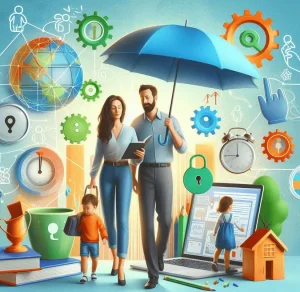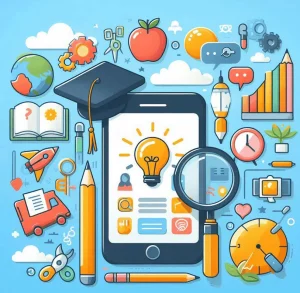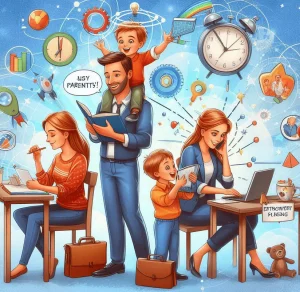INTRODUCTION:
Libraries have long served crucial roles in learning. The first great library, in Alexandria two thousand years ago was really the first university. It consisted of a zoo and various cultural artifacts in addition to much of the ancient world’s written knowledge and attracted scholars from around the Mediterranean who lived and worked in a scholarly community for years at a time. Today, the rhetoric associated with the National/Global Information Infrastructure (N/GII) always includes examples of how the vast quantities of information that global networks provide (i.e., digital libraries) will be used in educational settings. An important aspect of the Library’s educational mission is to promote and develop informational literacy in its users. Information literacy, in general, is the ability to identify, locate, use and interpret information effectively.
Role of Modern Libraries:
A library is defined by three fundamental functions:
(1)selection to create a “collection”;
(2) organization to enable access; and
(3) preservation for ongoing use.
Although technologies may evolve to add the second function to the Web, the first and third functions are antithetical to the very nature of today’s Web. The Web’s successor will become more “library-like,” and libraries will continue to become more “Web-like,” but each will retain some essential differences from the other.
The Web is most definitely not a library now, and it probably never will be. But the Web provides a wonderful mechanism for collaboration between and among scholars and librarians who want to create “libraries” of high-quality resources on a particular topic for scholarship and teaching. Another great concern about Web resources is that they are ephemeral. Libraries select and preserve information resources for generations to come. The longevity of Web-based resources is calculated in days!
How do libraries support teaching and learning?
A library is fundamentally an organized set of resources, which include human services as well as the entire spectrum of media (e.g., text, video, hypermedia). Libraries have physical components such as space, equipment, and storage media; intellectual components such as collection policies that determine what materials will be included and organizational schemes that determine how the collection is accessed; and people who manage the physical and intellectual components and interact with users to solve information problems
Libraries serve at least three roles in learning.
First, they serve a practical role in sharing expensive resources. Physical resources such as books and periodicals, films and videos, software and electronic databases, and specialized tools such as projectors, graphics equipment and cameras are shared by a community of users. Human resources–librarians (also called media specialists or information specialists) support instructional programs by responding to the requests of teachers and students (responsive service) and by initiating activities for teachers and students (proactive services). Responsive services include maintaining reserve materials, answering reference questions, providing bibliographic instruction, developing media packages, recommending books or films, and teaching users how to use materials. Proactive services include selective dissemination of information to faculty and students, initiating thematic events, collaborating with instructors to plan instruction, and introducing new instructional methods and tools. In these ways, libraries serve to allow instructors and students to share expensive materials and expertise.
Second, libraries serve a cultural role in preserving and organizing artifacts and ideas. Great works of literature, art, and science must be preserved and made accessible to future learners. Although libraries have traditionally been viewed as facilities for printed artifacts, primary and secondary school libraries often also serve as museums and laboratories. Libraries preserve objects through careful storage procedures, policies of borrowing and use, and repair and maintenance as needed. In addition to preservation, libraries ensure access to materials through indexes, catalogs, and other finding aids that allow learners to locate items appropriate to their needs.
Third, libraries serve social and intellectual roles in bringing together people and ideas. This is distinct from the practical role of sharing resources in that libraries provide a physical place for teachers and learners to meet outside the structure of the classroom, thus allowing people with different perspectives to interact in a knowledge space that is both larger and more general than that shared by any single discipline or affinity group. Browsing a catalog in a library provides a global view for people engaged in specialized study and offers opportunities for serendipitous insights or alternative views. In many respects, libraries serve as centers of interdisciplinary–places shared by learners from all disciplines.
Formal learning is systematic and guided by instruction. Formal learning takes place in courses offered at schools of various kinds and in training courses or programs on the job. The important roles that libraries serve in formal learning are illustrated by their physical prominence on university campuses and the number of courses that make direct use of library services and materials. Most of the information resources in schools are tied directly to the instructional mission. Students or teachers who wish to find information outside this mission have in the past had to travel to other libraries. By making the broad range of information resources discussed below available to students and teachers in schools, digital libraries open new learning opportunities for global rather than strictly local communities.
Much learning in life is informal–opportunistic and strictly under the control of the learner. Learners take advantage of other people, mass media, and the immediate environment during informal learning. The public library system that developed in the U.S. in the late nineteenth century has been called the “free university”, since public libraries were created to provide free access to the world’s knowledge. Public libraries provide classic nonfiction books, a wide range of periodicals, reference sources, and audio and video tapes so that patrons can learn about topics of their own choosing at their own pace and style. Just as computing technology and world-wide telecommunications networks are beginning to change what is possible in formal classrooms, they are changing how individuals pursue personal learning missions.
Professional learning refers to the on going learning adults engage in to do their work and to improve their work-related knowledge and skills. In fact, for many professionals, learning is the central aspect of their work. Like informal learning, it is mainly self-directed, but unlike formal or informal learning, it is focused on a specific field closely linked to job performance, aims to be comprehensive, and is acquired and applied longitudinally. Since professional learning affects job performance, corporations and government agencies support libraries (often called information centers) with information resources specific to the goals of the organization.
The main information resources for professional learning, however, are personal collections of books, reports, and files; subscriptions to journals; and the human networks of colleagues nurtured through professional meetings and various communications. Many of the data sets and computational tools of digital libraries were originally developed to enhance professional learning. The information resources–both physical and human–that support these types of learning are customized for specific missions and have traditionally been physically separated, although common technologies such as printing, photography, and computing are found across all settings.
Role of Digital Libraries:
Digital libraries extend such inter disciplinarily by making diverse information resources available beyond the physical space shared by groups of learners. One of the greatest benefits of digital libraries is bringing together people with formal, informal, and professional learning missions. Many of the data sets and computational tools of digital libraries were originally developed to enhance professional learning. The information resources–both physical and human–that support these types of learning are customized for specific missions and have traditionally been physically separated, although common technologies such as printing, photography, and computing are found across all settings.
Digital libraries combine technology and information resources to allow remote access, breaking down the physical barriers between resources. Although these resources will remain specialized to meet the needs of specific communities of learners, digital libraries will allow teachers and students to take advantage of wider ranges of materials and communicate with people outside the formal learning environment. This will allow more integration of the different types of learning. Although not all students or teachers in formal learning settings will use information resources beyond their circumscribed curriculum and not all professionals will want to interact even occasionally with novices, digital libraries will allow learners of all types to share resources, time and energy, and expertise to their mutual benefits. The following sections illustrate some of the types of information resources that are defining digital libraries.
conclusion:
As research and teaching increasingly rely on global networks for the creation, storage and dissemination of knowledge, the need to educate information-literate students has become more widely recognized. Students often lack the skills necessary to succeed in this rapidly changing environment, and faculty need training and support to make use of new technologies for effective teaching and learning. The current environment provides an opportunity for librarians to play a key role in the evolution of integrated information literacy. Thus, technology itself may provide a positive impetus as, “developments in education and technology are beginning to help academic librarians achieve new breakthroughs in integrating information and technology skills into the curriculum”
Technology allows library services to be available to students and faculty whenever and wherever they need such services. Technology makes possible round-the-clock library services without increasing investment in human resources. In addition, research materials increasingly exist only in digital form. Such resources are available only with the application of technology. Libraries will continue to exploit the inevitable technological innovation to improve productivity, control costs, enrich services, and deliver the high-quality content that is demanded.
Reference:
1. ls.unc.edu/~march/cacm95/main.html
2. educause.edu/pub/er/erm00/pp069073.pdf
3. informationr.net/ir/3-1/paper24.html






More Stories
Transform Learning with Joy: The Most Inspiring Educational Apps for High School Teens
Experience the Positive Energy of Educational Apps That Inspire Young Minds
Discover the Positive Impact of a Free English Learning App That Builds Lasting Confidence